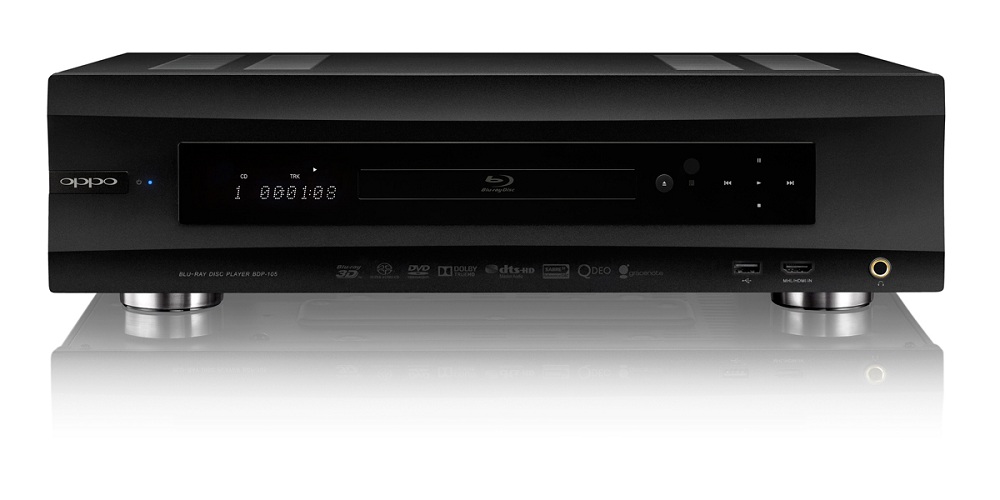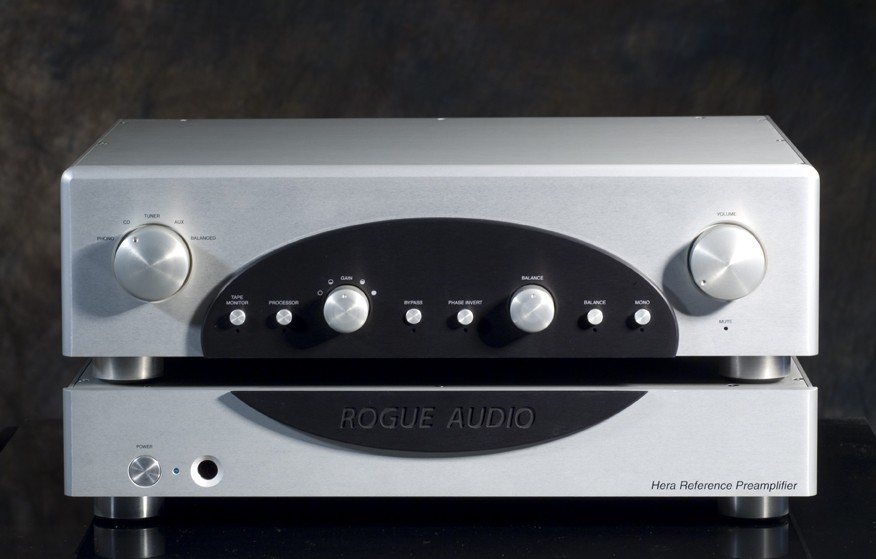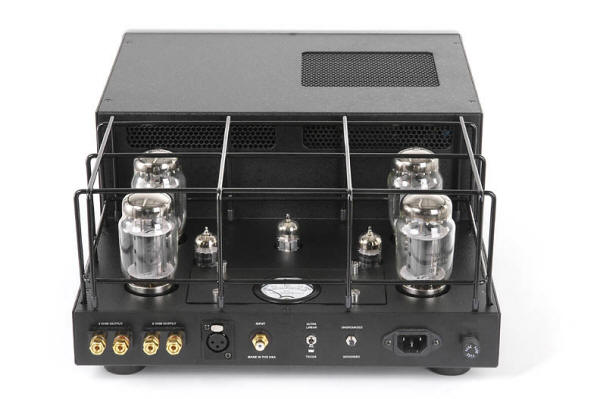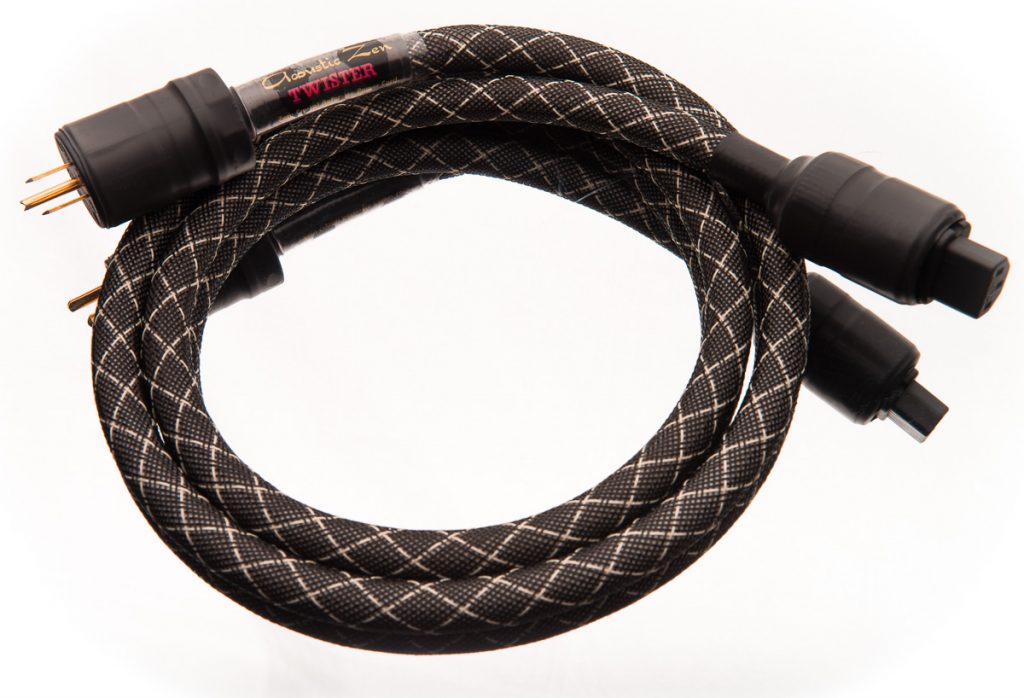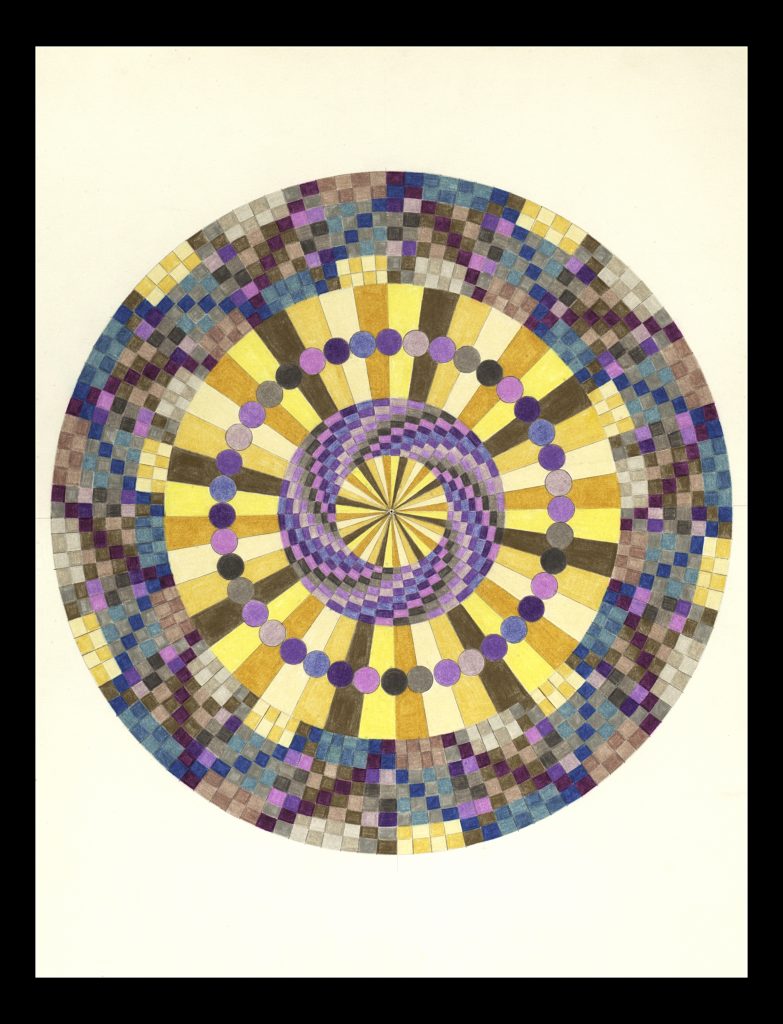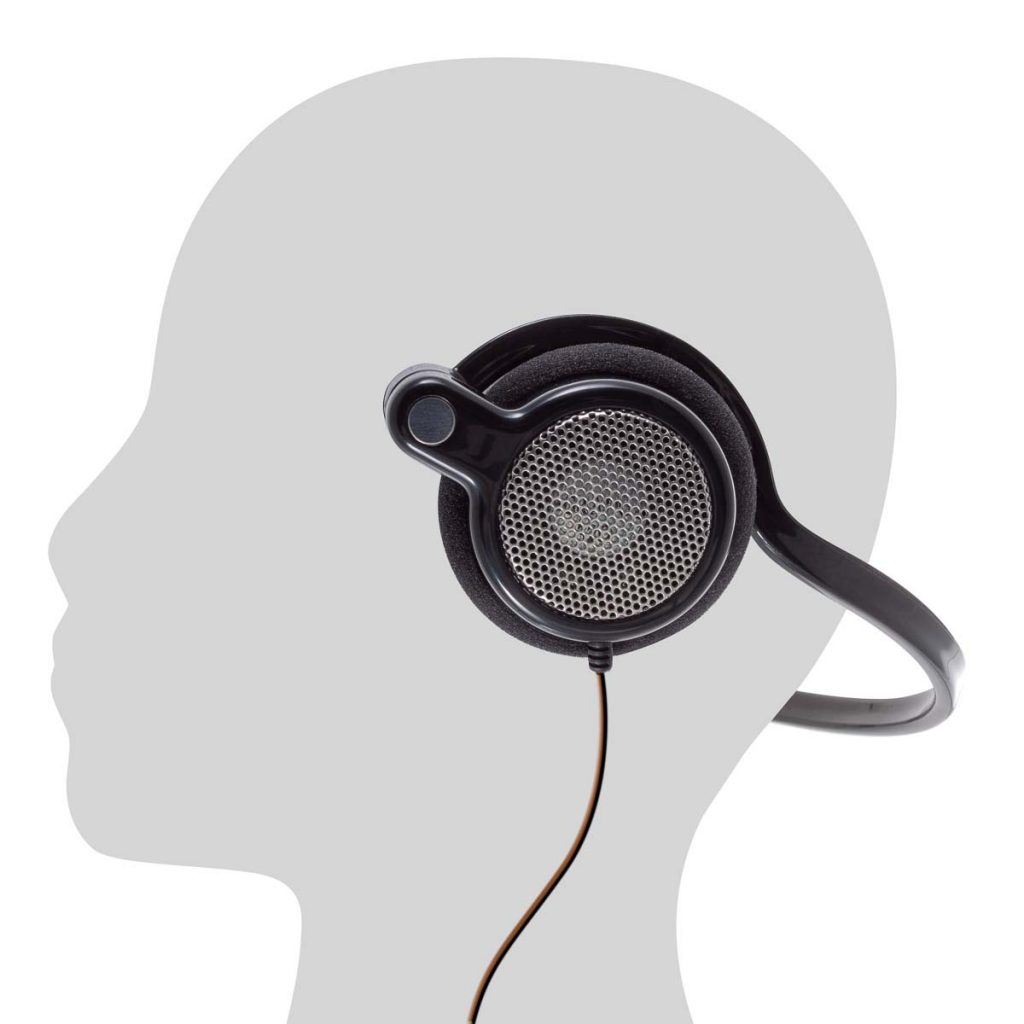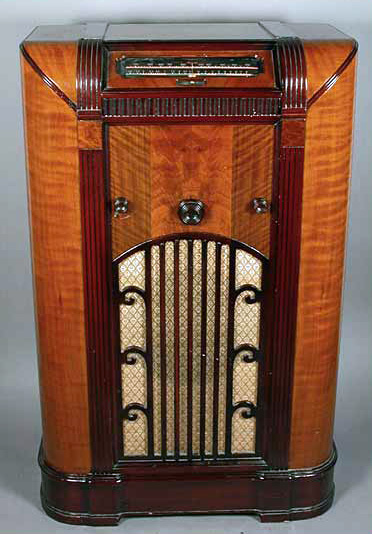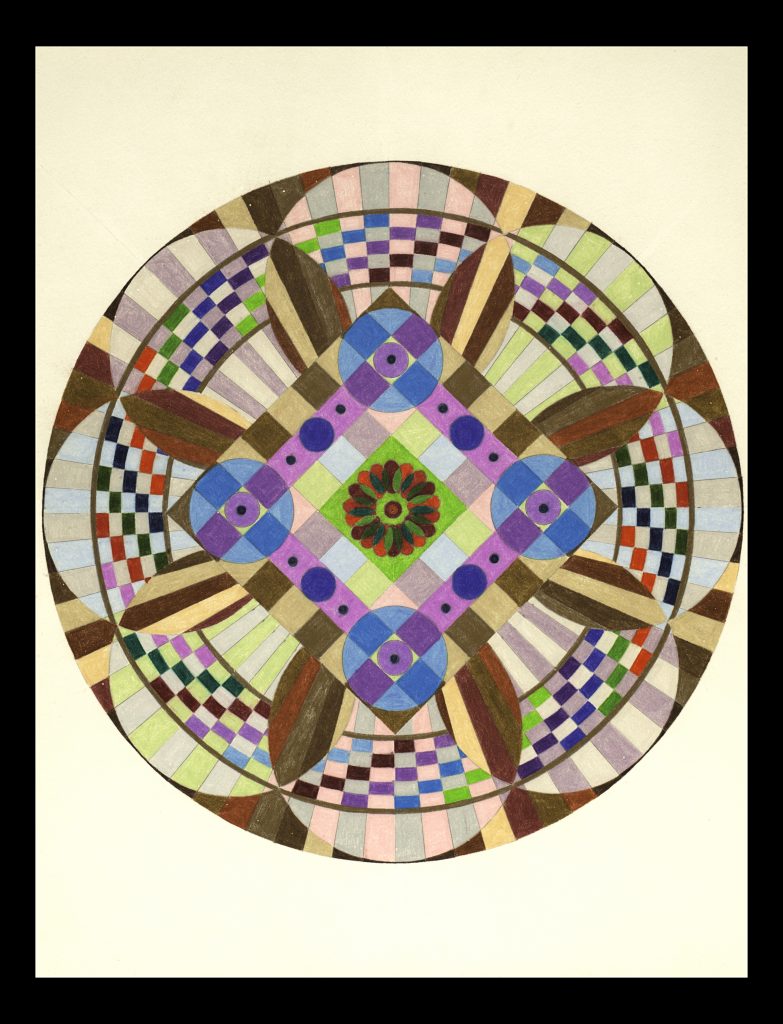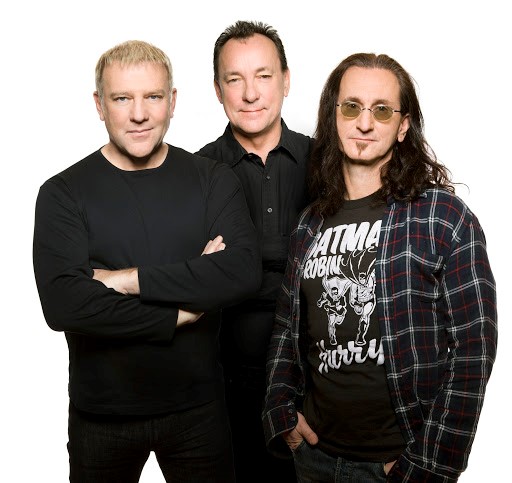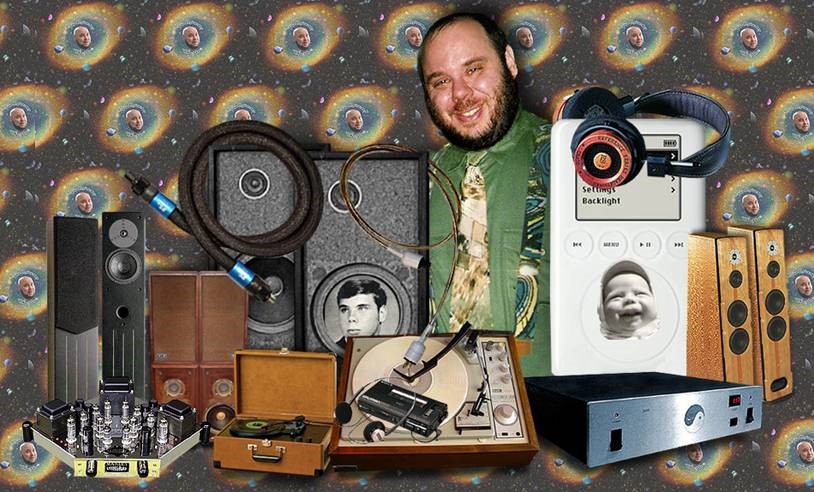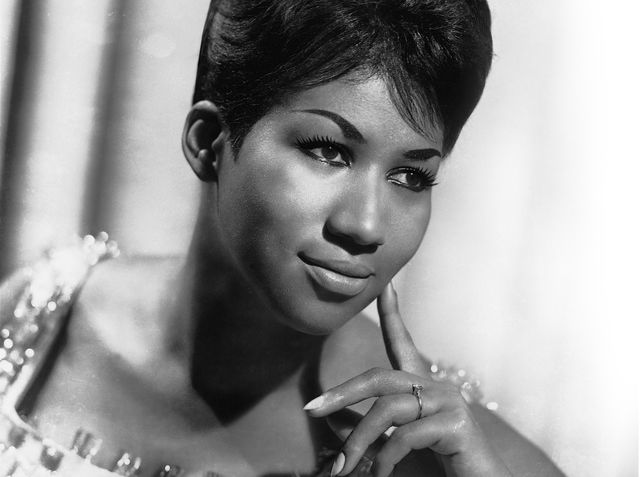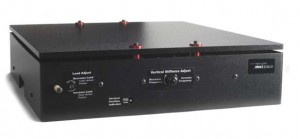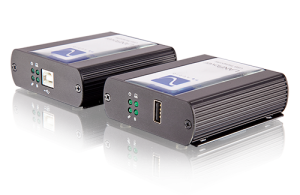Greetings from the underground, fellow music lovers and seekers after audio nirvana.
As I may have conveyed in my last ruminations many, many moons ago, I am luxuriating in the aural glow of an extended series of incremental tweaks, which coming as they have, in drips and drabs, have brought me to the point where I like my system very much—though not quite so much as a granddaughter I love even more.
So basically, while my fellow scribes continue to seek out variations on the latest and the greatest—and why the hell not—my own audiophile journey has more or less settled into a serene sameness. I am playing my drums and guitars a lot more, which eats into audio time. And after 20 years of lurching and searching, I'm enjoying what I have, while lightly tweaking things around the edges—though, truth be told, I arrived at my state of contented inertia due to some fairly significant upgrades and enhancements over the past few years to both my digital and analog source components…as well as to my preamplifier.
For instance, when the opportunity presented itself to step up from the Signature Edition of the Upgrade Company's modified Oppo BDP-95 (which so impressed me all the way back in Issue 64, from November/December 2012), to the Signature Edition of the Oppo BDP-105, I was able to significantly supercharge the quality of my digital front end, which, as per the basic classroom syllabus for High End Audio 101, may indeed be the most critical component in the signal chain: the system only being as good as…class? That's right, it's weakest link. And for far too many years, the digital front end was indeed the weakest link in my system.
Oh, there were those intermittent perks which came with being an audio scribe, wherein I enjoyed the opportunity to earball, evaluate and review some really top-notch digital source components. And so, at regular intervals, I was able to ascertain how good my system could truly sound with pricey, and—for their time—ultra-sophisticated digital designs such as the Linn 1.1 and Luxman DU-80 Universal Players.
Still, such is the degree to which digital technology has galloped along—particularly over the past decade—that an Upgrade Company-modified Oppo Universal Player selling for $2500 (and with the added gusto dunk of Blu-Ray playback), easily trumps the performance of no-compromise universal players from not so long ago, which while they surely excelled in my system, at a retail price of over $10,000 each, were well beyond my reach.
And while, predictably enough, the Signature Edition of the BDP-105 has since been superseded by the BDP-105D, featuring Darbee Visual Presence Video Enhancement (for enhanced purity and resolution), I exhaled once, and stood pat with the previous edition of the BDP-105. And that represents a pretty good hand of cards to hold, considering that The Upgrade Company's David Schulte is positively obsessive about the refinements and proprietary advances in his RFI/EMI shielding technology that he applies to dozens and dozens of high end audio products, and he is always looking to make a cumulative set of mods even better; as a result, while keeping things pretty close to the vest as to precisely what his proprietary enhancements comprise, he cites his ongoing research into various aspects of shielding as having a more profound cumulative impact on resolution than swapping out capacitors and resistors and circuit boards and the like. More than that, I could not drag out of him.
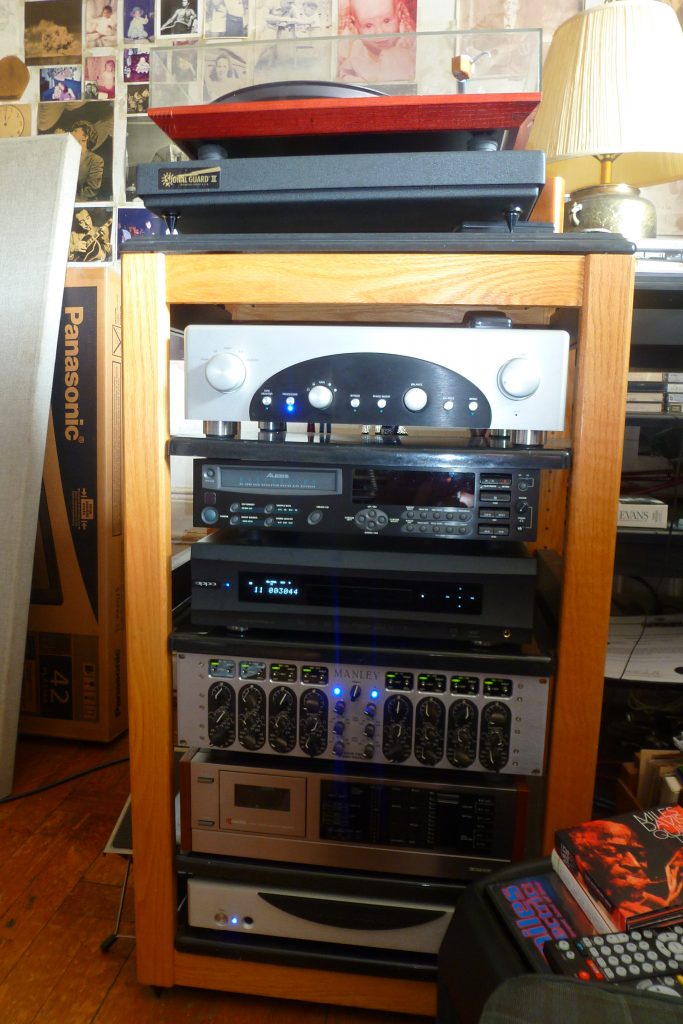
And so, having completed my initial burn-in process, Schulte urged me pony up for one additional return visit to his shop for a further set of advanced new shielding tweaks he promised would prove dramatic.
I was, as per usual, if not stubbornly skeptical, a little wary about whether or not I would be readily able to perceive the promised sonic enhancements in my newly re-tweaked Signature Edition of the BDP-105, but given my experience of high resolution cables, AC cords, voltage regulation and balanced power, I have long believed, through trial and error, in the efficacy of increased resolution through cleaner system power—and how with each successive reduction in any and all sources of internally and externally generated noise, one achieves greater dynamic realism and enhanced levels of inner detail—allowing one to delve that much deeper into the immersive experience of music reproduction.
Along those lines, in addition to what Schulte cautiously characterized as his latest breakthroughs in shielding-dissipation-attenuation-dampening technology, he did allow as to how he had further tweaked the OPPO by installing a trio of Bybee Slipstream Purifiers (one each on the incoming AC power lines for hot, neutral and ground), in the interests of further lowering the noise floor.
Well, even before I had time to log another 50-100-150 hours of burn-in, I was conscious of deeper, quieter backgrounds, a more palpable sense of acoustic space, greater image detail and specificity, and a more vivid leading edge to bass transients—all the music I played seemed to have added snap, crackle, and pop. Okay, so far, so good…additionally, with the passage of time, the Signature Edition of the OPPO BDP-105's portrayal of music evinced an enhanced sense of ease and relaxation, with more compelling levels of sound-staging depth and liquidity, dynamics and resolution. Additionally, since the balanced output of the OPPO "…features a true differential signal path all the way from the DAC to the 3-pin XLR connector," I am now able to run my digital front end fully balanced into the input on my Rogue Hera II Pre-Amp, and thenceforth, fully balanced all the way through the output stage of the Hera and on down the signal path into either my fully tubed Rogue M-180 Monoblocks [KT-120 output tubes] or Rogue's innovative hybrid stereo amplifier, the Rogue Medusa with its tubed front end and Class D-MosFet output stage. (Depending on seasonal conditions, what sonic signature I want lingering on my pallet, and whether or not I'm looking to put some burn on new speaker cables or system transducers).
Additionally, in the spirit of tweaking, I recently had the opportunity to upgrade the AC cord on my BDP-105 to a new Acoustic Zen Twister, which for $799, has to be one of the most profoundly impactful upgrades one can make to your front end components.
Time and time again I have been captivated by the sweet sense of ease and natural musicality of Robert Lee's audio designs. I was one of the first scribes to review Lee's Adagio Loudspeakers, pound for pound and dollar for dollar one of the enduring bargains in the audiophile universe: a modestly proportioned, amplifier friendly, cost-effective, floor-standing loudspeaker; and every time I've had the opportunity to audition Robert's top-of-the-line, no-compromise, frequency extended Crescendos, I'm hard-pressed to think of a better sounding, more dimensionally captivating, dynamically impactful, timbrally balanced, non-fatiguing, low distortion, full-range loudspeaker at its price point—or double it for that matter (though I have a special affection for Positive Feedback editor Dave Clark's Vandersteen Quatro Wood CT).
Acoustic Zen interconnects, speaker cables and AC cords have long enjoyed a place of honor in my signal chain, and Lee's youthful experiences as a violinist continue to inform the aural signature of his sonic accoutrements—a smoothly textured, sweetly extended, extravagantly detailed means of enhancing system synergy in terms of transient immediacy and the rendering of low-level details where the system doesn't merely disappear, but the room itself seems to drop away—supplanted by an utterly believable depiction of an acoustic space.
To this end, Robert Lee designed his new Acoustic Zen Twister AC Cord to maximize the performance of those critical analog and digital front end components, low current devices which would benefit the most not only from dramatically reducing the noise floor, but providing an instantaneous sense of signal veracity, where there are no perceptible lags in timing that can lead to a sense of…smeared frequencies.
Teaming the Twister with the Signature Edition of the Oppo BDP-105, made the performance of a great front end component seem positively surreal in terms of the enhancements I experienced damn near immediately…even more so over the next 25-50 or so hours as the Twister burned in. I was conscious of blacker backgrounds and more stable imaging; furthermore, I soon became conscious of how the Twister helped optimize the dynamics and harmonic details that translate into more believable soundstaging cues and timbral accuracy, not to mention a greater sense of ease and relaxation in terms of the overall presentation. Later on in the audition process, I had the opportunity to lend the Twister to a friend to try out with his preamplifier, a vintage triode jobber, and he was so taken by the sense, not only of enhanced lateral imaging but of front to back depth of field, that in short order, he purchased a Twister of his own, unwilling as he was to abide on Planet Earth without recourse to its sonic benefits.
Which might help explain why, all things being equal—my boundless passion for high end audio refinements and hip new gear notwithstanding—upgrades and enhancements are mainly now a matter of tweaks and fine-tuning.
Be that as it may, I won't front as if I'm confident this state of satisfaction will endure until the next column, let alone 2018. I mean, I'm only human—and rust never sleeps.
©Mandalas by Mary Morgan Stern
INDUSTRIAL VS. DEVOTIONAL LISTENING….
Still, having pursued the Holy Grail of Absolute Resolution & Total Immersion Into Music, as chronicled here and in other high end audio outlets over the past 20 years, while I am most definitely curious about new refinements, and take great joy in the gusto dunks my fellow audiophiles pursue in their own rigs, it has been a while since I felt motivated to go swapping out one component after another, after another, after another…
I'd just as soon leave well enough alone. But, hey, to those still feeling that urge, mazel tov. I get it—been there, done that.
Now, in the interests of full disclosure, it's worth noting that that for the past few years, I've been dealing with financial, health, quality of life and family issues, so my priorities have evolved along more practical lines—which is not to say that on a personal level, if presented with a cost-effective means of making a significant upgrade, that I would demure.
Still, while my passion for immersion in music has only deepened with the passage of time, over the past two-three years the degree to which I engage in INDUSTRIAL listening has by and large trumped the amount of time I engage in purely DEVOTIONAL listening at Ground Zero—a most ironic confession, given how assiduously I have upgraded every aspect of my reference system over the past decade.
So, how then does one explain, let alone justify, these greater proportions of INDUSTRIAL vs. DEVOTIONAL listening?
And does this tendency in so dedicated a high end audio conscript, betoken a more gradual movement away from audiophile values?
If so, it would appear that I am not alone.
Some time back on FACEBOOK, during the late Bronze Age as I recollect, my worthy constituent Michael Trei—an audiophile black belt if ever there was one, with a special mastery of all things relevant to the performance and set-up of cartridges, tonearms and turntable systems—posted an item which in short order led me to some heart-rending audiophile laments in which, behind door number three, some scribe bemoaned what he saw as an unfortunate trend: away from component-based SYSTEMS, and towards computer based music reproduction and ancillary portable devices.
Exhale. Typically, along with the omnipresent bugaboo about the original sin regarding low-resolution formats, such pronouncements are presumably meant to shepherd us into the New Year with cachinnations of doom and gloom about the state of high end audio.
All of which puts me in mind of those JAZZ IS DEAD articles which have been appearing and reappearing with dreary inevitability for most of my adult life. And while I have not been out and about like I used to be—certainly not to the point where I can make any conclusive pronouncements about the ultimate state of high end audio—it does seem (SEEM) that while sales of major system components amongst those pursuing dream systems may have peaked out, that there exists a renewed interest in higher resolution DACs, while the newest generation of high resolution headphones have experienced a dramatic upswing—and surprise-surprise, our dear spinster aunt, VINYL, has not only endured and expanded its outreach amongst audiophiles, but has garnered significant converts among millennials. And all this time we'd been led to believe that their pronounced attachment to all things streaming and downloadable shan't allow for off-road adventures in the Analog Jungles of Frontier Land.
Still, if the fevered bereavement of the Trojan women of The Audiophile Sepulcher is to be believed, this represents an irreversible trend—a lost generation of listeners inured to the wonders of high resolution audio.
I'm not quite sure I see it that way. Based on my own personal experiences, I'd suggest that it's simply a matter of access and convenience. Many people in the course of their daily lives put in serious face time at their computers; while others inevitably find themselves out and about, on the go, accessing music primarily through their cellular devices. There are only so many hours in a day…luxuriating in our sacred sweet spot is something of an indulgence, righteous, transformative, intelligent indulgence though it might be.
Because as inviting, as involving, as awe-inspiring as my own no-compromise home audio rig is (and two righteous secondary systems, I hasten to add), these days I rarely have an immersive experience quite as involving as when I'm plugged in to my cellular device while taking a long walk, or on those occasions when I find myself behind the wheel of my car, on a long solitary drive, with my cellular device plugged into my all too average car audio rig (yes, I said plugged in. as my Kenwood deck dates from that historical epoch which preceded Bluetooth).
Of course, like many of you, dear readers, I can readily apprehend higher levels of resolution, both in my own reference system, and in the no-compromise, all-singing/all-dancing systems of my more well-heeled brethren.
Which begs the question…what are we talking about? Are we talking about listening to one's music? Or are we talking about listening to one's system?
Ideally, both…but hey, when out of the house and on the go, or stuck on some long damn airplane flight, given a choice between all or nothing at all, well…I have like 250 full albums in the form of 320kbps MP3 files (and 150 big .mp4 video downloads) residing on a 64GB Micro SD Card (with room to spare) on my old Samsung Galaxy Note 3, which I generally experience in random-shuffle mode, through a pair of ridiculously good, $49.99 iGrado headphones, with their incredibly articulate, sweetly obliging midrange resolution—the totality of which brings me a whole lot of joy. Not high resolution enough for the purists amongst you? I beg to differ. Spare me.
And likewise, when I am at home, as much time as I spend festooned to my computer, I often find myself less motivated to listen to my system off axis in the adjacent room—as opposed to in my sweet spot (and my system sounds quite good off axis)—than I am to simply get on with other tasks at hand.
PREFERENCE vs. CONVENIENCE?
DEVOTIONAL LISTENING vs. INDUSTRIAL LISTENING?
Hey, I have over 3TB of .wav, .mp4, .mp3 and high definition files on a trio of hard drives on my PC (no MacBooks or dedicated servers for this Luddite). Scrolling through hundreds of folders, as if rotating some immense old time radio dial, it's often more convenient to simply keep working, listening to music on my original edition of the $200 Audioengine2 powered loudspeakers, which when teamed with their $25 stands, are sufficiently decoupled from my desktop to offer believable resolution, bass extension and stereo imaging. Are there better desktop speakers? Damn right there are. Am I interested? I'm more than cool with what I've got.
Likewise, for some years I've been deriving considerable enjoyment from another piece of older technology I've grown accustomed to, in the form of my stalwart Alpha Design Labs/Furutech GT40 USB 2.0 DAC, a 24 Bit/96 KHz Audio Interface with which, via two sets of incoming and outgoing 7-meter interconnects, I can connect the music percolating on my hard drives to my Rogue Hera II preamplifier and thenceforth via Pony Express to my reference system in the adjacent room, all the while deploying Audacity's free online program to digitize LPs and cassettes on my hard drive; simple and effective—me happy.
So what do you do with a splendid Swiss Army Knife like the GT40, offering as it also does an excellent sounding, no-nonsense hook-up to sundry headphones?
These past few years, ADL/Furutech engineers busied themselves developing a newer, completely original digital platform, quite distinct from the GT40, in the form of their all-singing/all-dancing STRATOS, which offers access to all manner of high resolution DSD and PCM files, and a choice of sophisticated headphone loading options amongst a host of new functions that fans of the GT40 wish they'd had on the older unit. I must confess to being intrigued. Be strong, Chip, be strong.
All the while, unwilling to toss out the baby with the bathwater, and conscious of sustaining a high level of performance at a far more affordable price point, ADL/Furutech engineers saw fit to go back to the well and significantly enhance a proven, still-relevant USB DAC device with its re-introduction as the ADL GT40a.
And they did themselves proud for sure…smoother and sweeter, more extended and resolved, the GT40a represents a palpable upgrade over its initial iteration, such as how they enhanced their MC/MM Phono stage from MC/47k ohms to MC/100k ohms—all the better to accommodate a wider range of modern, low impedance, moving coil cartridges. I happily employ a dedicated Rogue Triton MM/MC Phono Preamplifier in my reference system, so I cannot comment on the GT40a's performance in this regard.
However, as to its level of performance as a DAC and dedicated headphone amplifier? Well, now…
By upgrading the USB, DAC and ADC ICs, ADL was able to step up the GT40a's sample rate to full 24-bit/192kHz resolution and to support Asynchronous mode and ASIO as well. Likewise, a pair of better performing new OP AMPS have also contributed to the GT40a's enhanced sonic veracity; as a dedicated DAC—channeling streaming music to my main system—the GT40a has proven more detailed and dynamic, spacious and silvery.
Better still, in supplanting their older OP AMP for a dedicated MAX9722 Headphone AMP, the GT40a provides significantly greater levels of detail, and far better signal-to-noise performance when driving high-resolution headphones. The GT40a's headphone circuitry not only offers pinpoint definition and more believable acoustic cues, but I've really been impressed by how much quieter it is from top to bottom; how much smoother and more accurate the response of the volume potentiometer has proven to be…so much so, that I find myself more often motivated to strap on the cans, and for longer periods of listening—with far less fatigue.
To sum up, the GT40a has proven adept at delivering a greater sense of intimacy and immediacy—it is direct and to the point, an obliging and revealing acoustic portal. With each new visit I find myself less compelled to simply turn on the main reference system, as I apprehend more supple levels of acoustic detail and resolution in my headphones than I had previously perceived…but more anon of that breakthrough, with paeans to our reigning headphone champion and other adventures, in my next column. Happy New Year, pilgrims.
©Mandalas by Mary Morgan Stern






